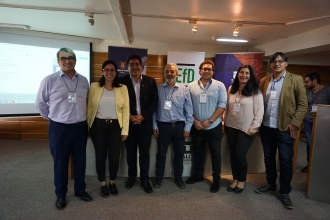
Plastic pollution and aquaculture brought together researchers and policy makers in Chile
The VI Workshop on Economics of Natural Resources and Environment was held on March 21st and 22nd in Santiago, Chile. The activity was organized by the Environment for Development Initiative (EfD) and…
